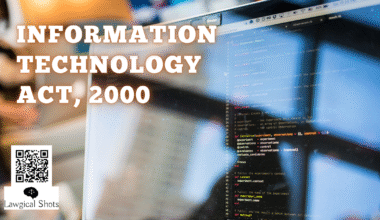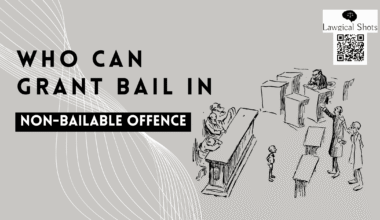A Constitution is the supreme or fundamental law of the land, that sets out a framework for distribution of power and principal functions of the organs of the government as well as the extent of its sovereign power. The Indian Constitution upholds all the values and exercises its power to oversee peace and security. The Indian Constitution is sovereign, secular, and democratic. It represents the faith and aspirations of the people. From the point of view of amendment the Constitution of India is neither too rigid nor too flexible. This medium route was adopted, that is, it has been arranged to amend according to the country, time and circumstances. Article 368 of the Constitution of India mentions the powers and procedure of amending the constitution. That is why the Constitution of India is often termed as a “Living Document”. Here, let’s have a look at the law regarding amendment of Indian Constitution.
Why Constitutional Amendment is Necessary?
The amendments to the Constitution are undertaken to ensure that the document evolves and grows along with the nation. Constitutional amendments are important to keep the document up to date with changing times. They help address new challenges, fix unclear or outdated rules, and reflect current values. Amendment of Indian Constitution also allows for correcting past mistakes and improving fairness. By making these changes, the Constitution can better protect people’s rights and ensure the government works for everyone. This helps the constitution stay relevant and effective as the society evolves.
How can the Indian Constitution be amended?
Article 368 of the Constitution of India prescribes three methods for amendment of different provisions of the constitution.
- Amendment by Simple Majority
- Amendment by Special Majority
- Amendment by Extra Special Majority
Amendment by Simple Majority
There are some subjects in which amendments can be done by a simple majority of Members of Parliament, and are ‘not deemed to be amendment of the constitutions’. E.g., matters relating to creation or reorganisation of States (Article 4), creation or abolition of Legislative Councils in the States (Article 169), creation of local Legislatures or Council of Ministers or both for certain Union Territories (Article 239 A).
Amendment by Special Majority
There are some subjects in which amendment of Constitution of India requires a special majority. A Special Majority means a majority of the total number of members of Parliament and a two-thirds majority of the members present and voting. Such subjects are covered under this process, which is not mentioned in the list of amendments made by the simple majority and the extra special majority.
Amendment by Extra Special Majority
There are some subjects which are of utmost importance, so a very special process of modifications has been adopted for them. For amendments in these subjects, a special majority of Parliament and more than half of the states are required for ratification.
Some of the subject matter are as follows:
- Presidential election;
- Extension of executive power of Union and States;
- Union and State Judiciary;
- Distribution of legislative powers between the Union and the States;
- Represent of States in Parliament;
- Seventh Schedule of Constitution
- Procedure for amendment of constitution.
Procedure for Amendment of Indian Constitution
Article 368 lays down the procedure to amend the Constitution of India. It involves the proposal of an Amendment Bill in either house of the Parliament. The proposed amendment is then debated and must be passed by both Houses of Parliament with a special majority, which includes a majority of the total membership and those present and voting. Once the approval is attained, the bill is presented to the President who will then give his assent to the bill, after which it becomes the part of the constitution.
Limits of Constitutional Amendment under Article 368
Many questions have arisen from the beginning regarding the extent of the amendment of the constitution or the power of Parliament namely
- Can fundamental rights be amended ?
- Can the constitution be repealed ?
- Can a radical change be made in the constitution ?
The journey of powers of Parliament in relation to the Amendment to Constitution begins with the case of Shankari Prasad. From Shankri Prasad to Kesavananda Bharati cases, there was a power trial between Parliament and the Supreme Court regarding the amendment of the Constitution. In the matter of Shankari Prasad v. The Union of India (A.I.R 1951 S.C. 458) it was held by the Supreme Court that Parliament has the power to amend any part of the constitution, including fundamental rights, under Article 368. The Court held that an amendment made under article 368 does not fall within the definition of the word “method” used in Article 13. Therefore, no amendment can be made in the Constitution by Parliament. This opinion has been confirmed in Sajjan Singh v. State of Rajasthan (A.I.R 1965 S.C. 845), where the Supreme Court again ruled that Parliament could amend any part of the constitution, including the fundamental rights, under Article 368, as long as procedure laid down in the article is followed. But in the case of Golaknath v. State of Punjab (A.I.R 1967 S.C. 1643), the Supreme Court held that Parliament can not amend fundamental rights, as they are part of the “Basic Structure” of the constitution. This was a significant departure from the earlier decision in Shankari Prasad and Sajjan Singh. The court ruled that the power of Parliament to amend the constitution under Article 368 is limited and can not be used to alter or destroy fundamental rights.
Finally, in the year 1971, by making 24th amendment to the Constitution, the Constitution amendment was removed from the word “Law” used in Article 13. In the landmark case of Kesavanand Bharati v. State of Kerala (A.I.R 1973 S.C. 1461), the Supreme ruled that while Parliament has the power to amend the Constitution under Article 368 it can not alter the “Basic Structure” of the Constitution. This doctrine of “Basic Structure” became a fundamental principle in constitutional law. In this way, the Basic Structure has been considered as the “Laxman Rekha” of the Constitution amendment.
What is Basic Structure Doctrine?
The Basic structure doctrine states that there are certain fundamental structures and founding principles of the constitution which make the backbone of the constitution. These principles are so vital that they cannot be altered or destroyed by any constitutional amendment. While the Court did not provide an exhaustive list of what constitutes the basic structure, several elements have been identified through subsequent judgments. These include:
- Presidential elections;
- Supremacy of the constitution;
- Republican and democratic form of constitution;
- Secular form of constitution;
- Separation of Power in Legislation, executive and judiciary;
- Federal form of constitution;
- Unity, integrity and sovereignty of the country;
- The dignity of the person ensured by the fundamental rights and policy directive elements;
- Establishment of welfare state;
- Rule of Law;
- Judicial Review;
- Democracy based on free and fair elections;
- Limited powers of Parliament to amend the constitution; etc.
Regarding the basic structure of the constitution, the affairs of Minerva Mills v. Union of India (A.I.R. 1980 S.C.1789) is observable. In this case, the Supreme Court reaffirmed the Keshavananda Bharati judgment, emphasizing that Parliament cannot amend the Constitution in a way that destroys its basic structure. The Court specifically struck down parts of the 42nd Amendment, which sought to give Parliament unlimited power to amend the Constitution, finding them inconsistent with the basic structure doctrine.
In the matter of Waman Rao v. Union of India (A.I.R. 1981 S.C. 271), the Supreme Court, further clarified the basic structure doctrine and ruled that any constitutional amendment that seeks to alter or affect the fundamental rights in a way that violates the “basic structure” of the Constitution would be invalid.
Conclusion
In short, we observed that the Parliament implements the amendment procedure of India’s Constitution in accordance with Article 368 of Part XX of the Constitution. We can state that the only way to amend the Indian Constitution is to introduce bills in both houses of parliament. These bills must be signed by two-thirds of the majority in both houses, half of the members of the other house, and the majority of the State legislature, which consists of half of its members. The Indian Constitution only permits the parliament to edit Articles 54 and 55, as well as Articles 162 and 241. It also permits the house to alter any of the seventh Schedule’s lists. When the approved bill becomes law, the president’s approval is needed.
The concept of Amendment of Indian Constitution has been simplified by our intern, Ms. Sanya Wadhwa. She joined the team to assist and bring informational legal blogs.








